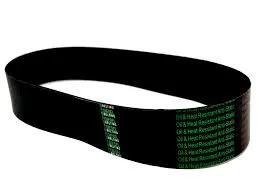- Arabic
- French
- Russian
- Spanish
- Portuguese
- Turkish
- Armenian
- English
- Albanian
- Amharic
- Azerbaijani
- Basque
- Belarusian
- Bengali
- Bosnian
- Bulgarian
- Catalan
- Cebuano
- Corsican
- Croatian
- Czech
- Danish
- Dutch
- Afrikaans
- Esperanto
- Estonian
- Finnish
- Frisian
- Galician
- Georgian
- German
- Greek
- Gujarati
- Haitian Creole
- hausa
- hawaiian
- Hebrew
- Hindi
- Miao
- Hungarian
- Icelandic
- igbo
- Indonesian
- irish
- Italian
- Japanese
- Javanese
- Kannada
- kazakh
- Khmer
- Rwandese
- Korean
- Kurdish
- Kyrgyz
- Lao
- Latin
- Latvian
- Lithuanian
- Luxembourgish
- Macedonian
- Malgashi
- Malay
- Malayalam
- Maltese
- Maori
- Marathi
- Mongolian
- Myanmar
- Nepali
- Norwegian
- Norwegian
- Occitan
- Pashto
- Persian
- Polish
- Punjabi
- Romanian
- Samoan
- Scottish Gaelic
- Serbian
- Sesotho
- Shona
- Sindhi
- Sinhala
- Slovak
- Slovenian
- Somali
- Sundanese
- Swahili
- Swedish
- Tagalog
- Tajik
- Tamil
- Tatar
- Telugu
- Thai
- Turkmen
- Ukrainian
- Urdu
- Uighur
- Uzbek
- Vietnamese
- Welsh
- Bantu
- Yiddish
- Yoruba
- Zulu
नोभ . 11, 2024 17:43 Back to list
stationary engine flat belts
Stationary Engine and Flat Belts A Historical Perspective
The evolution of technology has always been driven by the need for more efficient power transmission methods. Among these innovations, the stationary engine and flat belts played a crucial role during the late 19th and early 20th centuries. These two elements became fundamental in various industries, from agriculture to manufacturing, shaping the way power was harnessed and utilized.
The Stationary Engine
Stationary engines are engines that are not intended for mobility. Instead, they are designed to provide power to various machines and mechanical devices. The rise of stationary engines began with steam engines, which revolutionized industry by providing a reliable and potent source of power. By the late 1800s, internal combustion engines also emerged, further transforming the landscape of power generation.
The versatility of stationary engines allowed them to be used in various applications. They powered mills, factories, and farms. The engines could run continuously, providing a steady output of energy for tasks ranging from milling grain to driving saws in lumber yards. The introduction of the internal combustion engine marked a significant turning point; these engines were more efficient, easier to operate, and required less maintenance than their steam-powered counterparts.
The Role of Flat Belts
Complementing the stationary engine was the flat belt, a significant innovation in power transmission. Flat belts were made from materials such as leather or fabric and used to transfer power from the stationary engine to various machinery. Their design was simple yet effective; a flat surface allowed for a good grip, resulting in efficient power transfer without slipping.
One of the main advantages of flat belts was their ability to operate over long distances while transmitting power. This characteristic was vital in large factories where machines were often placed far apart. The ease of installation and flexibility in handling made flat belts a popular choice among engineers and industrialists.
stationary engine flat belts

Advantages of Flat Belts in Industrial Applications
Flat belts had several advantages that contributed to their widespread adoption. Firstly, they could easily accommodate various pulley sizes, making them adaptable for different applications. The design of the flat belt system allowed for simple alignment and adjustment, which meant that maintenance was relatively straightforward.
Additionally, flat belts operated more quietly than gears and chains, making them favorable in environments where noise reduction was necessary. They were also more forgiving regarding misalignment, which contributed to their longevity and reduced wear on both the belt and the engine.
Transition to Modern Technologies
While stationary engines and flat belts were paramount during their time, the advent of modern technology has led to the development of more efficient power transmission systems. The introduction of V-belts, timing belts, and synchronous belts has provided alternatives that further improve efficiency and reduce energy loss. These newer designs offer better grip and are more resistant to wear and tear, thereby extending the lifespan of transmission systems in various industrial applications.
Moreover, advancements in materials science have resulted in belts made from synthetic materials, which boast improved durability and flexibility compared to traditional flat belts. Consequently, industries have largely transitioned away from flat belt systems to newer technologies that promise enhanced performance.
Conclusion
The stationary engine and flat belts were integral components of the industrial revolution, marking a significant step in the evolution of power transmission. Their simplicity, effectiveness, and adaptability laid the groundwork for understanding the principles of mechanical power transfer that continue to influence modern engineering practices today. Although technologies have advanced beyond flat belts and stationary engines, the legacy of these innovations remains evident in the plethora of machinery and engineering solutions we rely on in both industrial and everyday contexts. The journey from stationary engines and flat belts to contemporary systems reflects the relentless pursuit of efficiency and innovation that characterizes human ingenuity.
-
Korean Auto Parts Timing Belt 24312-37500 For Hyundai/Kia
NewsMar.07,2025
-
7PK2300 90916-T2024 RIBBED BELT POLY V BELT PK BELT
NewsMar.07,2025
-
Chinese Auto Belt Factory 310-2M-22 For BMW/Mercedes-Benz
NewsMar.07,2025
-
Chinese Auto Belt Factory 310-2M-22 For BMW/Mercedes-Benz
NewsMar.07,2025
-
90916-02660 PK Belt 6PK1680 For Toyota
NewsMar.07,2025
-
drive belt serpentine belt
NewsMar.07,2025

